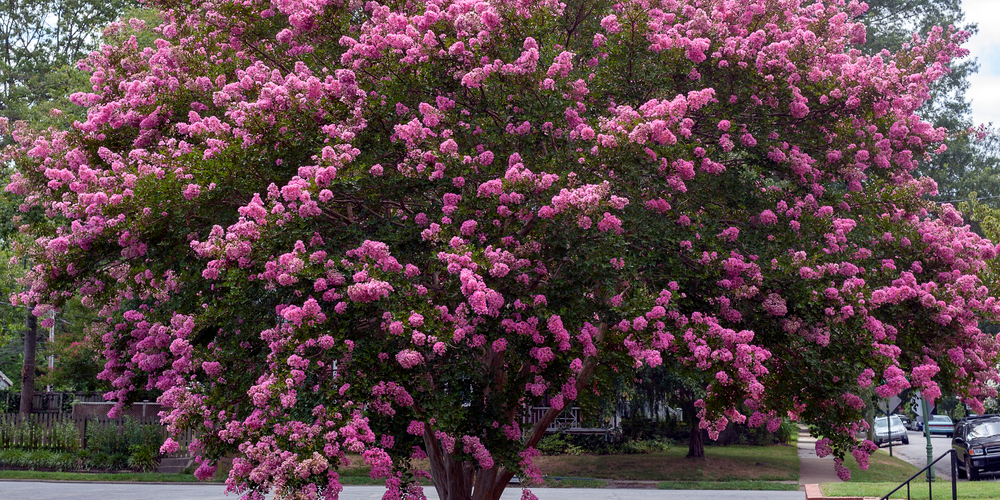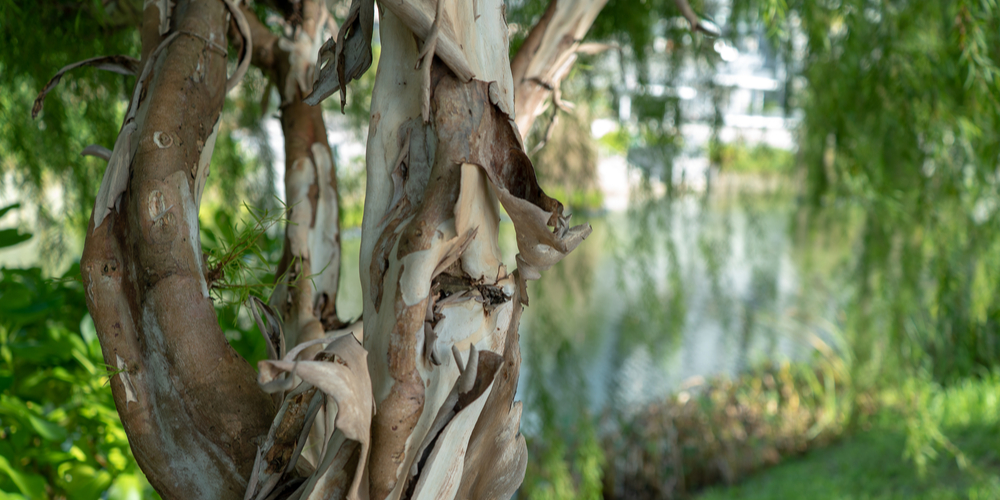Crepe myrtles are a staple in the south. The bark of the tree is often overlooked, but it’s something worth taking notice of. The bark is unique, with a reddish hue and a “crepe-like” texture. It’s not exactly pretty, but it definitely has character. And that character is what makes crepe myrtles so special.
Without a doubt, this beautiful tree can significantly enhance the curb appeal of any home. Its delicate flowers bloom in a variety of colors, including white, pink, red, and purple. It has beautiful foliage that stuns in the fall, and its branches are the perfect size for hanging lights.
But the most stunning feature of the crepe myrtle is its bark. The peeling, exfoliating bark is what makes this tree so unique. It’s also what causes so much confusion and concern for homeowners.
Crepe Myrtle Bark Peeling: A Normal Process
So, what causes crepe myrtle bark to peel? The simple answer is: it’s supposed to. While it’s normal for some people to think that the peeling is a result of pests and disease, you have to understand that this is simply the nature of the crepe myrtle tree. Do not try to fix this with an antifungal treatment or pesticide – it will only do more harm than good.
The bark peeling process is actually a very gradual one. It starts with the outermost layer of bark, which slowly loosens and separates from the tree. This process is known as exfoliation, and it’s perfectly normal. In fact, it’s necessary for the crepe myrtle to stay healthy.
The peeling bark allows the tree to get rid of the old, dead layers and make way for new growth.
In fact, this peeling process is one of the things that make this tree unique. It exposes a beautiful, smooth inner bark that is a reddish-brown color. This inner bark is what gives the crepe myrtle its characteristic look. These trees start to peel when they have reached maturity – typically around 15 years old.
While the peeling bark is normal, there are some things that can speed up the process. If the tree is stressed, for example, it will shed its bark more quickly.
Common causes of stress include drought, excessive heat, and damage from chemicals or tools. If you notice that your crepe myrtle’s bark is peeling more quickly than usual, check for these stressors and try to alleviate them if possible.
After the winter months, you’ll notice that the color will start to turn from bright red to a subdued hue. This is another sign that the exfoliation process has begun. As the tree sheds its outer layers, the inner bark is exposed to more sunlight. This causes it to change color and lose its vibrant hue.
Crepe Myrtle Bark Peeling: Will it Cause Any Problems?
In most cases, the peeling bark is nothing to worry about. It’s a perfectly normal process that is essential for the health of the tree. However, there are some instances in which the peeling can be cause for concern.
If large patches of bark are peeling away from the tree, it could be a sign of a more serious problem. This could be caused by disease, pests, or even physical damage. If you notice any of these problems, it’s important to contact a certified arborist or tree care professional as soon as possible.
If you’re concerned about the appearance of your crepe myrtle, there are a few things you can do to help it along. You can use a garden hose to lightly spray down the trunk and remove any loose pieces of bark. You can also use a soft brush to gently scrub away any dirt or debris.
Just remember – don’t try to force the bark to come off. This can damage the tree and cause even more problems. Let the crepe myrtle do its thing, and eventually, you’ll have a beautiful, smooth trunk.
Crepe myrtle bark peeling: Final Thoughts
Leaving the bark of a peeling crepe myrtle tree is probably the best thing that you can do. You don’t have to worry about the tree’s health – it’s simply going through a natural process.
If you’re concerned about the appearance, there are a few things you can do to help it along. Just remember to be gentle, and let the crepe myrtle tree do its thing.
Related Article: Birch Tree Bark Peeling

